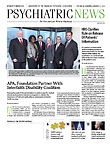As the age of electric health records (EHR) begins to burgeon, the engagement between patient and physician may be growing distant, according to a study published January 24 in the International Journal of Medical Informatics.
Researchers at Northwestern University Feinberg School of Medicine and the University of Wisconsin-Madison conducted a study examining the impact of EHRs on eye-gaze patterns between patients and physicians.
“When doctors spend too much time looking at the computer, it can be difficult for patients to get their attention,” Enid Montague, Ph.D., an assistant professor in internal medicine and geriatrics at Northwestern and lead author of the study, said in a statement. “It’s likely that the [physician’s] ability to listen, problem-solve, and think creatively is not optimal when physicians’ eyes are glued to the screen.”
The authors noted that though numerous studies have focused on EHRs and verbal communication between physicians and patients, few investigations have explored the impact of EHRs on nonverbal communication, which can provide indications of patients’ comfort with clinicians and allow physicians to assess a patient’s emotional state.
In the current study, Montague and colleagues observed 100 doctor-patient visits in which physicians used paper or electronic records to support patient care. The patients ranged from age 18 to 65. Both physicians and patients were evaluated on the time spent gazing at each other, the computer screen, and paper charts during each medical visit.
The results showed that clinicians who used EHRs spent an average of 31 percent of the visit gazing at the computer screen, while physicians who used paper charts gazed at those records for 9 percent of the visit. In addition, patients gazed significantly more at health charts that were on the screen—regardless of whether they could see the screen or understand the contents—than those whose care was supported by paper charts.
“Physicians’ gaze largely influences patient gaze in the primary encounter, which means that any intervention that influences physicians to focus on technology will subtract from patient–physician eye contact,” the study noted. “Any intervention to increase eye contact will likely need to be targeted to the physician.”
John Luo, M.D., a psychiatrist and senior physician informaticist at the University of California Los Angeles Health, who was not involved with the study, told Psychiatric News that “electronic medical records are not perfect. They have many advantages such as legibility, access from many sites, and others; however, in mental health care, providers need to pay close attention to body language and other nonverbal cues of patients—[particularly] in medication management, where this situation would most likely occur.”
Luo stated that future training should include instruction that will foster more effective doctor-patient interactions as the use of EHRs becomes more prevalent in clinical care. Until such instructions are developed, Luo suggested that psychiatrists should take advantage of both EHR and paper health records to ensure that patients are receiving clinicians’ undivided attention.
“For now, it may be wise for mental health professionals to use paper to document notes and then look at the computer near the end of the session to take care of tasks such as an appointment or electronic prescription,” Luo said. “Though the use of EHRs may increase [physicians’] workflow time to see a patient, the pros have to be considered with the cons for the best needs for patient care.”
The study was funded by the National Institutes of Health and the Wisconsin Research and Education Network. ■

